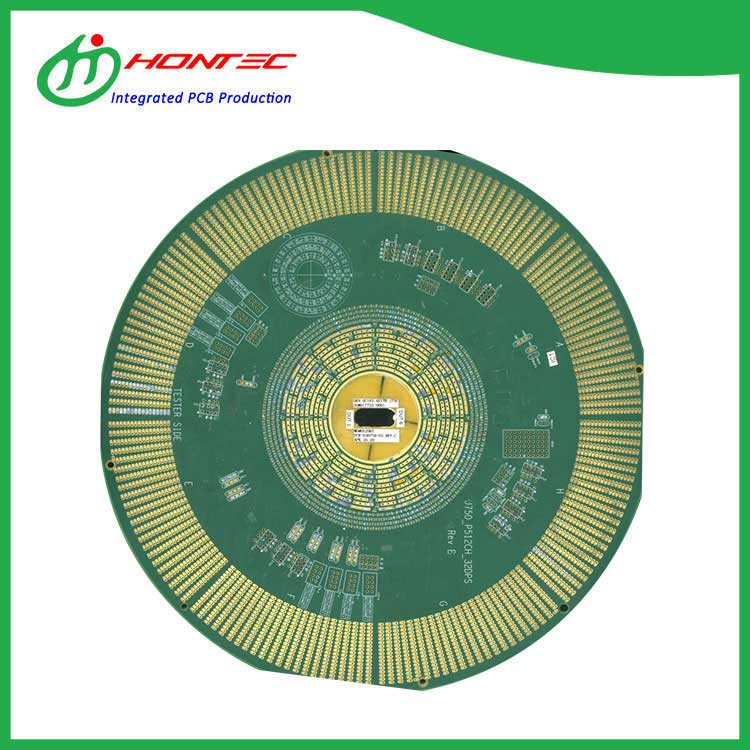Halogen-Free PCBs: A Safer and Greener Choice for Electronics
2023-10-18
Introduction
In the world of electronics manufacturing, environmental consciousness and safety are becoming increasingly important considerations. Halogen-free PCBs (Printed Circuit Boards) have emerged as a solution that addresses both concerns. In this blog, we will delve into the significance of halogen-free PCBs, their environmental and safety benefits, and their growing importance in the electronics industry.
Understanding Halogen-Free PCBs
Before diving into the benefits, let's clarify what makes a PCB halogen-free. PCBs are typically composed of various materials, including a substrate (often fiberglass or epoxy), copper traces, and a solder mask. The term "halogen-free" refers to the absence of halogenated flame retardants in the PCB materials. Halogens such as chlorine and bromine are commonly found in flame retardants used in electronics, but they have raised environmental and health concerns.
Environmental and Safety Benefits of Halogen-Free PCBs
1. Reduced Environmental Impact: Halogen-free PCBs are more environmentally friendly because they do not release halogen gases when exposed to high temperatures, such as during soldering or in the event of a fire. Halogens released into the environment can contribute to air pollution and harm ecosystems.
2. Improved Recycling: Halogen-free PCBs are easier to recycle. Traditional PCBs with halogenated flame retardants can release toxic gases when incinerated for recycling, making the recycling process more hazardous and less sustainable.
3. Enhanced Safety: The absence of halogenated flame retardants makes halogen-free PCBs safer for both manufacturers and end-users. Halogens can release toxic fumes when ignited, posing health risks in case of fire incidents.
4. Compliance with Regulations: Many countries have imposed restrictions on the use of halogenated flame retardants in electronic products. Halogen-free PCBs ensure compliance with these regulations, facilitating international trade.
5. Consumer Confidence: As environmental awareness grows, consumers are increasingly seeking eco-friendly products. Using halogen-free PCBs can enhance the marketability of electronic devices by showcasing a commitment to sustainability.
Applications and Industry Adoption
Halogen-free PCBs are suitable for a wide range of electronic applications, including consumer electronics, automotive electronics, aerospace, medical devices, and telecommunications equipment. Their adoption is on the rise for several reasons:
1. Regulatory Requirements: Many countries and regions, such as the European Union and California, have enacted regulations limiting the use of halogens in electronics. Compliance with these regulations is a driving force behind the adoption of halogen-free PCBs.
2. Consumer Demands: Consumers are becoming more environmentally conscious and are favoring products that adhere to eco-friendly standards. Manufacturers are responding by using halogen-free materials in their products to meet consumer demands.
3. Supply Chain Pressure: Global supply chains are increasingly focused on sustainability. Manufacturers that use halogen-free PCBs can demonstrate their commitment to environmental responsibility to suppliers and partners.
4. Industry Standards: Industry organizations and standards bodies are promoting the use of halogen-free materials. Compliance with these standards is often a requirement for participating in specific markets or industries.
Conclusion
Halogen-free PCBs are at the forefront of environmentally responsible electronics manufacturing. By eliminating the use of halogenated flame retardants, they reduce environmental impact, enhance safety, and meet regulatory requirements. As consumers and industries continue to prioritize sustainability, the adoption of halogen-free PCBs is expected to grow, making them a standard choice for electronic devices of the future. These boards not only contribute to a greener and safer electronics industry but also empower consumers to make environmentally conscious choices in their electronics purchases.



